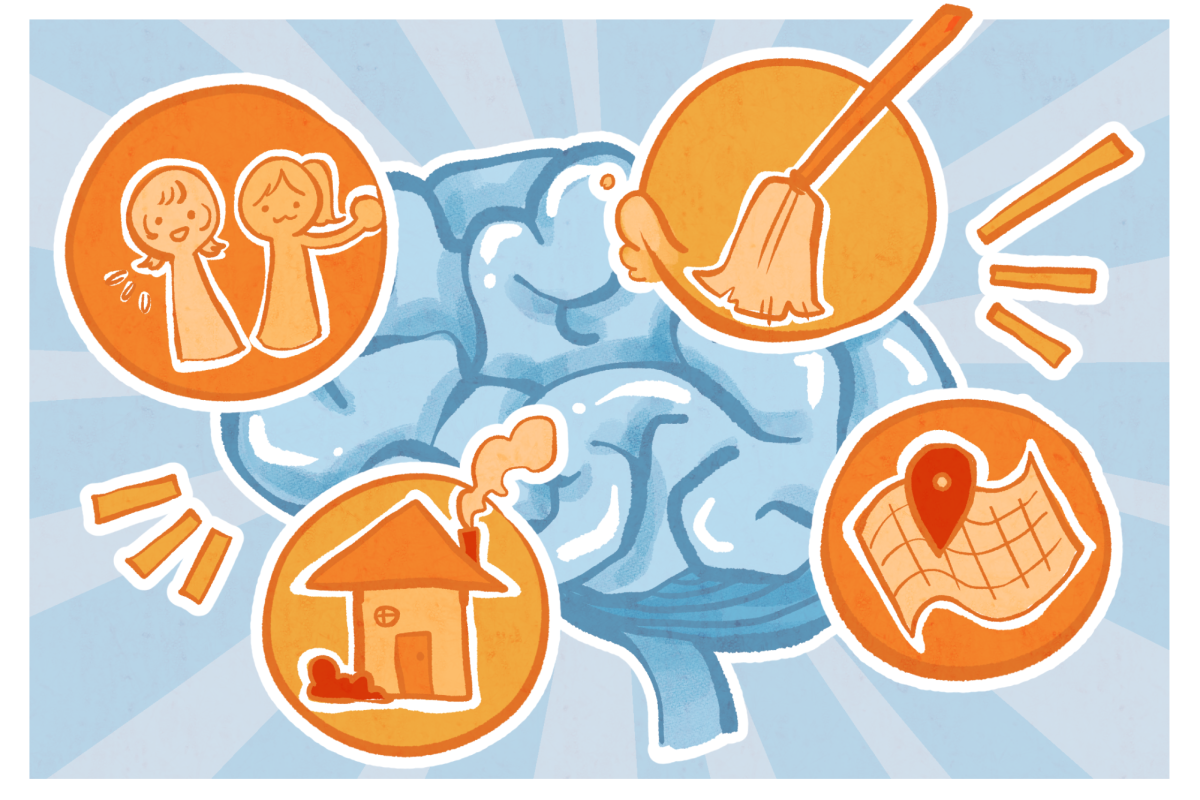On Nov. 13, Krannert Art Museum held their Creative Aging and Memory Café event. It featured a gallery walk-through and a painting activity where participants could create artwork based on what they saw in the gallery.
“They’re thematic tours, and they’re each designed to look at a different exhibition, different gallery,” said Rachel Storm, assistant director of community engagement and learning at KAM.
The tour featured artworks from different eras, made using various mediums, with the idea that participants would identify what is beautiful to them.
“The theme was really looking at beauty and our personal conceptions of what is beautiful — where we see and what we find beauty in, both in artworks in the museum, but also in the way we share stories of how different experiences … moved us in our lives,” Storm said.
During the art-making activity, participants were asked to emulate the beauty they saw on the tour. The activity aimed to engage in the tactical process of art making.
Get The Daily Illini in your inbox!
“The idea is that as people are making art and as we’re on the tour together, we’re really grounding in storytelling and inviting people to share their own stories — to elicit memories and to also create community in and among people who may be older adults, maybe also older adults experiencing dementia or Alzheimer’s and their loved ones,” Storm said.
There are many connections between Alzheimer’s and all forms of art. The Alzheimer’s Association says art can help give those with Alzheimer’s — and also their care partners — a sense of purpose.
“Art and music are always the top two expressed interests among our residents, so we try to engage and take advantage of the University and the amenities and programming that they have,” said Teri McCarthy, attendee and resident member specialist at ClarkLindsey.
The Fisher Center for Alzheimer’s says artistic engagement can help ease behavioral symptoms, boost mood and self-esteem and engage memory.
“When they’re painting, they’re thinking of nothing else besides their artwork,” said Sadie Gauna, attendee and program director at Amber Glen. “All of those thoughts of feeling abandoned or wondering where their families are — we can put those all aside through painting or other activities.”
Storm emphasizes the broader importance of creative aging events to build community through art for those with Alzheimer’s.
“There is tremendous benefit to using the arts and creative practice and creative expression to engage memory,” Storm said. “There’s a lot of research on the role of the arts, both visual but also auditory — such as music, performance (and) movement … I think that for us, it’s also about generating community and helping circumvent isolation for populations that are often isolated.”
Events like the Alzheimer’s Café bring together people from the Alzheimer’s community, whether people with Alzheimer’s or their care partners. It also gives people with Alzheimer’s a chance to engage in technical exercises that can improve their brain function, allowing them to feel like they are doing something with their time and motivating them.
“It doesn’t matter how old you are, everyone needs purpose; it’s what gets us out of bed in the morning and gives purpose to our day and our loved ones,” McCarthy said. “Art and music are the most simple and wonderful ways of getting purpose.”









